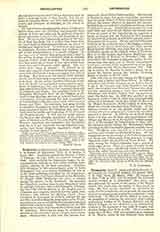
John Drumgoole
Priest and philanthropist, b. at Granard, Co. Longford, Ireland, August 15, 1816; d. in New York, March 28, 1888

Drumgoole, JOHN C., priest and philanthropist, b. at Granard, Co. Longford, Ireland, August 15, 1816; d. in New York, March 28, 1888. He emigrated to New York in 1824, and to support his widowed mother worked as a shoemaker. His piety and zeal attracted the notice of the pastor of St. Mary’s church who made him the sexton of that parish in 1844. He had always cherished an aspiration to study for the priesthood, and to provide the means for this and to maintain his mother he conducted a small book-store. In 1863 he left St. Mary’s to carry out his intention of entering the seminary; after making preliminary studies at St. Francis Xavier’s and St. John’s Colleges, he was admitted as an ecclesiastical student at the seminary of Our Lady of Angels, Suspension Bridge, New York, in 1865. He was ordained priest there
From here he was appointed to take charge of a lodging-house for boys which the St. Vincent de Paul Society had opened some time previously. The caring for homeless and destitute children appealed to him specially, and he volunteered to take up the direction of this work which had languished until then. Under his sympathetic and prudent management success was at once assured. He started St. Joseph‘s Union for the support of the institution and soon extended its membership all over the world. The first location of the lodging-house became inadequate to the needs and he purchased land at Great Jones Street and Lafayette Place and built an imposing structure which was opened as the Mission of the Immaculate Virgin in December, 1881. In the following year a farm was bought on Staten Island, and Mount Loretto, the country-place of the Mission, where trade schools and other buildings were built, their care being given to a community of Franciscan Sisters. These buildings cost more than a million dollars and were large enough to care for 2000 destitute children annually; at his death, which occurred after a very short illness, Father Drumgoole left them entirely free of debt. He accomplished all this without any great personal talents apart from a simplicity and earnestness of charity that won him friends everywhere. He had singular success in managing boys, and, like his great prototype, Don Bosco, he believed and said that it was all due to his rule: “in looking after the interests of the child it is necessary to cultivate the heart.”
MALLICK J. FITZPATRICK

